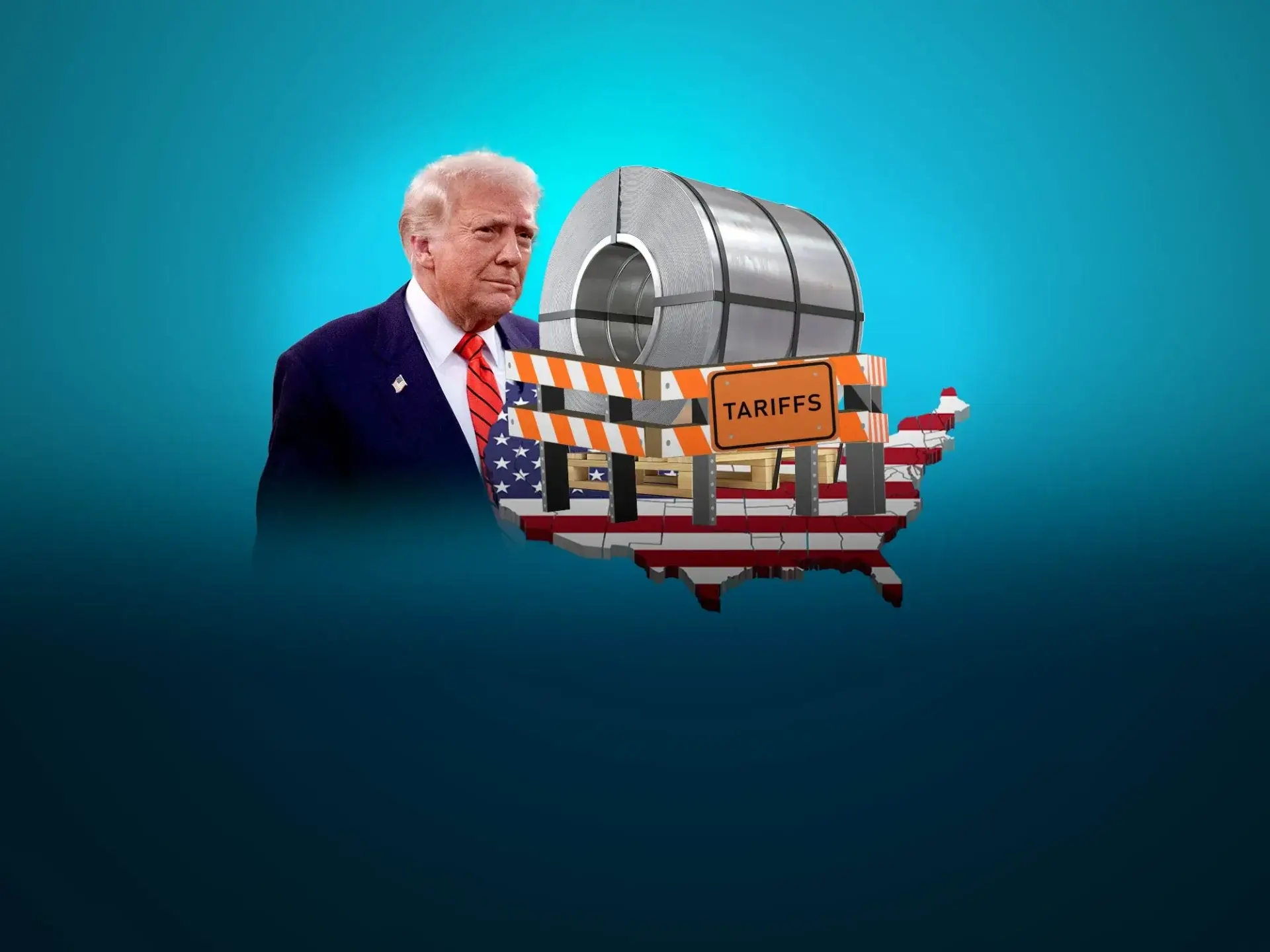If you’re in construction, you already know that material costs can make or break a project. But what happens when those costs spike overnight due to tariffs?
That’s exactly the situation North America is facing right now. With Donald Trump back in office, a fresh wave of tariffs on steel, aluminum, and other key imports is sending shockwaves through the construction industry. These new policies are expected to drive up costs, squeeze supply chains, and make projects more expensive on both sides of the border.
Here’s what you need to know about the latest tariffs, how they impact construction, and what firms can do to protect their bottom line. (Note: the situation seems to change daily, if not hourly, so take this as a snapshot in time and always check the latest news!)
Trump’s New Tariffs on Steel and Aluminum
Steel and aluminum are essential to construction, from structural framing to HVAC systems and infrastructure projects. And now, they’re getting a whole lot more expensive.
In February 2025, Trump announced a 25% tariff on all imported steel and aluminum, which officially took effect on March 12, 2025. This tariff applies to imports from all countries, including Canada, which had previously been exempt from some trade restrictions under the USMCA. Canadian officials are already pushing back, arguing that these tariffs will harm both economies and drive up costs for U.S. businesses that rely on Canadian steel.
A Brief Spike to 50%—Then a Reduction
At one point, the U.S. raised tariffs on Canadian steel and aluminum imports to 50%, escalating trade tensions between the two countries. However, after pressure from industry leaders and negotiations between Canada and the U.S., this was reduced back to 25%.
While the rollback prevented an even more extreme cost surge, the damage was already done—many suppliers raised prices, and uncertainty in the market remains high.
How It Impacts Construction
- Higher material costs: The price of steel and aluminum will rise, forcing contractors to pay more for beams, rebar, siding, and metal roofing.
- Supply chain disruptions: With Canadian imports affected, firms may need to find alternative suppliers, which could lead to shortages and project delays.
- Increased project costs: Developers will likely pass these price hikes onto clients, making commercial and residential construction more expensive.
Lumber Tariffs Are Back—And They’re Bigger Than Before
The U.S.-Canada softwood lumber dispute has been going on for decades, and it just escalated again. Trump’s new trade policies include a 25% tariff on most Canadian goods, including lumber, a sharp increase from the previous 8.6% duty.
This move is expected to drive up homebuilding costs in the U.S., where Canadian lumber is a major supply source.
What This Means for Construction
- Homebuilders will take a hit: Higher lumber prices mean increased costs for framing, flooring, and structural components.
- Rising housing prices: As materials become more expensive, expect home prices to climb—bad news for affordability in an already tight housing market.
- Canadian lumber firms could suffer: While the tariffs aim to boost U.S. domestic lumber production, they also risk straining trade relations and reducing Canadian exports.
The Bigger Picture: A New Trade War?
These tariffs aren’t just about construction materials—they could be the start of a broader trade conflict. There are concerns that retaliatory tariffs from Canada could further disrupt trade between the two countries. If that happens, costs for other imported goods—like heavy machinery, construction tools, and even fuel—could also rise.
What Can Construction Firms Do?
Tariffs may be beyond your control, but there are ways to minimize their impact:
- Lock in Prices with Suppliers: If possible, negotiate fixed-price contracts with your suppliers now before prices climb even higher.
- Diversify Your Material Sources: Look for alternative suppliers outside Canada and the U.S. Consider sourcing domestically where feasible to avoid tariff costs.
- Explore Prefabrication: Off-site prefabrication can help reduce waste and control material costs more effectively.
- Pass Costs Strategically: Be upfront with clients about rising material costs. Factor price volatility into contracts to protect your margins.
- Stay Informed: Tariff policies can change quickly. Keep an eye on trade negotiations and industry news to stay ahead of further developments.
Final Thoughts
Trump’s latest tariffs are already shaking up the construction industry, and their full impact has yet to be seen. With higher prices for steel, aluminum, and lumber, contractors and developers will need to rethink their budgeting, sourcing, and bidding strategies.
Now more than ever, maximizing efficiency and reducing waste are key to protecting profit margins. Whether it’s streamlining workflows, improving communication across teams, or gaining better visibility into project costs, the right tools can help firms stay competitive—even as material prices climb.
For now, construction businesses should focus on adapting—whether through smarter procurement, strategic contracts, or alternative building methods. Those who can operate leaner and work smarter will be best positioned to weather the impact of rising costs.
